Alexandre Dubor is an architect and researcher combining new technologies in an attempt to improve how we build and live in our cities. He holds a Masters degree in Architecture & Engineering from EAVT & ENPC in France, and a Masters Degree in Advanced Architecture from the Institute for Advanced Architecture of Catalonia (IAAC) in Spain, with a specialization in robotic fabrication and large-scale additive manufacturing.
Since 2012, he has been working at IAAC as an expert in digital and robotic fabrication. He is now leading the Open Thesis Fabrication program as well as the Master in Robotic and Advanced Construction. Together with IAAC staff, students and industrial partners, he is investigating how new advances in material, digital fabrication and computational design could lead to a better construction ecosystem, towards a more efficient, affordable, sustainable and personalized built environment.
In this Q&A, Dubor discusses the future of 3D printing & robotics, and the shift currently taking place in the construction industry.
What are the challenges faced by the construction sector today?
Alexandre Dubor: Today’s construction sector is facing an ever-growing need for radical change and reinvention. Growing cities are challenging the sector to find ways to build more, faster and at a lower cost. While the limited resources on the planet call for a more sustainable way of building, inhabiting and reusing our constructions.
At the same time, the construction sector has not yet taken advantage of the digital revolution which is currently happening in other manufacturing sectors, such as in the automobile and aerospace engineering.
Robotics, 3D printing and AI are all making the future of construction, increasing productivity and reducing the costs. These technologies also open new (computational) design opportunities for optimizing the performance of buildings by reducing CO2 emissions and energy demand.
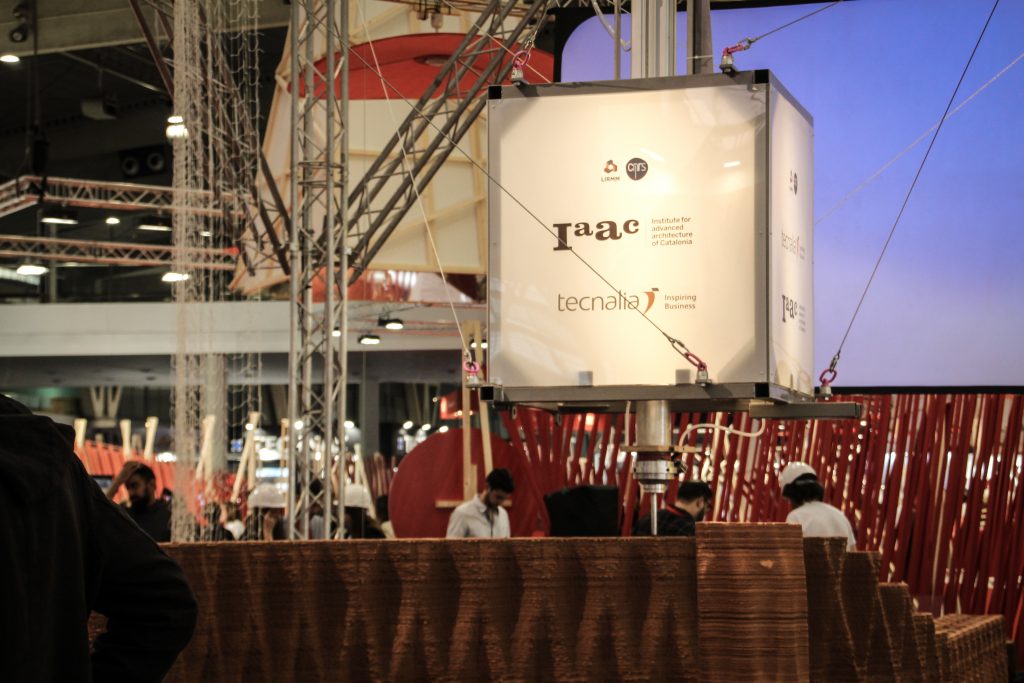
What retains the construction sector to embrace new technologies?
AD: The Economist stated in July 2017, builders’ productivity has stagnated or even decreased over the past 50 years. Today, machinery and technology are evolving towards a smarter digital version embracing the complexity of the construction industry. 3D scanning, Artificial Intelligence (AI), robotics, advanced materials, computational design and building information modeling (BIM) management are bringing improvements which haven’t been seen in the sector for decades, allowing improvements in flexibility, integration, speed and precision.
Ultimately, those technologies promise the reduce cost and ecological impact while increasing design opportunities and mass customization possibilities. Once those digital technologies are proven to be efficient, their adoption will be a competitive need.
When will we see this change happen?
AD: The change is happening faster than we think. Only last year, we inaugurated a 3D printed bridge in a public park in Madrid (Alcobendas). The project was the fruit of a collaboration between ACCIONA and IAAC in exploring the potential of powder-based 3D printing for the construction sector and it marked a milestone in the industry as being the first civil engineered construction made using such promising technology.
The form of the 3D printed bridge was developed through parametric design, which allowed the architects to optimize the distribution of materials. The execution of the project, lead by ACCIONA, was developed by a multidisciplinary team of architects, material scientists, and structural and mechanical engineers, including Enrico Dini, an expert inventor of large-scale 3D manufacturing and IAAC collaborator.
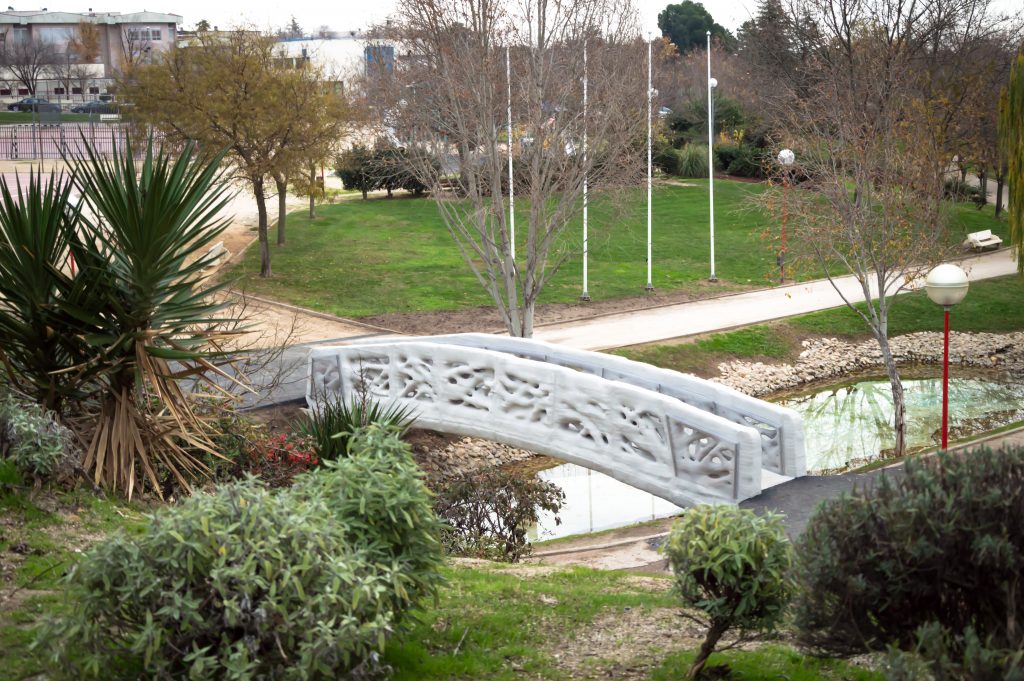
Is 3D printing technology ready to be on the market?
AD: 3D printing is a group of manufacturing technologies at the intersection between material science, mechatronic engineering and computational design and it is current disrupting many manufacturing sectors. In the construction sector, specific requirements of scale, tolerance and materials have not yet been fully tackled by existing technologies and they require improvements in design, material and machinery to meet the current market needs.
Knowledge and technology have become more accessible and we are already printing houses, bridges and architectural elements at high speeds with low costs. 3D printing will not completely replace architectural construction, instead it will add value by optimizing production processes, fostering sustainability and using local materials without the need for transport, molds, joints and assembly. In this regard, more companies, research centers, education and individuals are investing in this research technique.
How do you plan to tackle these issues?
AD: One of the first issues tackled by IAAC regards the freedom of shape, often limited by the need for support material in the printing process. The Mataerial research developed a new method of additive manufacturing which allows the creation of 3D objects on any given working surface, independent of its inclination and smoothness, and without a need for additional support structures. By using innovation extrusion technology, the robotic arm is able to neutralist the effect of gravity during the printing process.
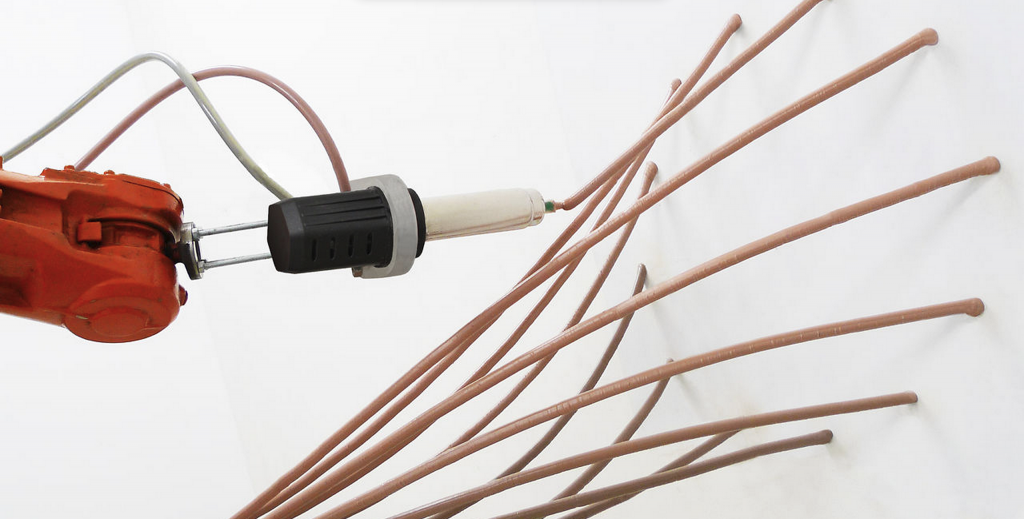
This atypical manufacturing process opens up a new opportunity in design, releasing increased freedom in the creation of 3D shapes. Mataerial can be applied in different fields, from furniture and big-scale manufacturing to desktop and space 3D printing.

A second crucial issue in 3D printing is related to the materials used. Challenging the ecological impact of traditional construction materials such as concrete, 3D printing introduces natural materials, and vernacular architecture principles in construction. Together with collaborators from all over Europe, IAAC is developing bio-based and low embodied energy materials suitable for 3D printing, such as the work of Pylos that portrays the interest to use clay in the soil as a natural, recyclable and locally found material.
The novel material is developed is a natural material mix based on soil and bio-based additives that do not require firing (air drying), yet it is 3 times stronger than traditional adobe and suitable for 3D printing. The material conserves the benefits of soil constructions, including natural insulation, fire protection, air circulation, low costs, 100% recyclable, stiffness, great strength, lower greenhouse effects, regulating the climate and providing a healthy indoor environment.
Through this work at IAAC, we explored new design opportunities for adobe constructions. The project Terra Performa explored the influence of additive manufacturing on construction strategy and climatic performance design. The research exposed how careful design of 3D printed shapes could control and enhance the natural climatic performance of adobe construction such as evaporative cooling, thermal mass, insulation and natural ventilation.

Is 3D printing the only manufacturing technology that will disrupt the construction sector?
AD: In short, no. The construction sector uses many manufacturing techniques and materials and we believe that this will continue and most probably more technologies will be introduced. Some traditional techniques will be improved with digitization and automation of the process while entirely new processes will emerge.
For example, IAAC’s project Fusta Robotica uses robotic technology and computational design to mass produce a one-to-one scale prototype which is entirely made of timber, achieving a parametrically controlled structural system, where each of the 940 pieces is uniquely designed and manufactured.
The flexibility of robotic fabrication combined with computational design has allowed the fabrication workflow to be adapted and tuned to integrate locally sourced wood which is normally improper for construction due to its tendency to warp while drying.
The use of robotic systems ensure maximum precision and optimization of a complex construction process, an achievement that lays the groundwork to revalue this building technique, usually discarded because of the manufacture and assembly costs.
Another example is the Musical Robotic Façade project which is a collaboration between Isern Architects, Cumella Ceramics and IAAC in the design and production of a hotel façade in Barcelona. Here, the focus is to give an added value to the ceramic façade by providing each tile with a unique texture carved robotically.
By applying an algorithm, a robot was able to transform a musical input into carvings on the ceramic bricks which cover the hotel’s façade The whole work is composed of 1120 pieces (800 in the front and 320 in the main hotel entrance), each one containing eight seconds of robotic reinterpretation of Vivaldi’s Four Seasons recomposed by Max Richter.
As stated by Toni Curnella, the ceramist in the project:
“The interest of robots in fabrication lies in its capacity to open new opportunities in design and fabrication, that can combine traditional crafts and digital design,”
– We couldn’t agree more.
Is this technology ready for the building site?
AD: Projects presented precedents are based on a principle of precise off-site prefabrications that will be assembled onsite by traditional means (humans + machinery). Most of the digital fabrication is currently happening off-site, in a spacious and controlled environment, more suitable for machinery and less disturbing for the neighbours. A current trend in construction direct towards more off-site prefabrication.
But another trend is possible. Advances in robotics, sensors and AI indicates the possibility for robots to evolve in the complex environment of building sites. The collaborative project of IAAC, TECNALIA and Noumena On-site Robotics demonstrates the possibility to use large cable-driven robots to 3D print large structures directly on the construction site. These cable robots are proposed to scale up the 3D printing industry as they are inexpensive to maintain, can be installed easily and can build quickly and effectively.

The construction robots are aided by drones, which are designed to swoop over the construction site and monitor the progress of the structures during the drying phase. The drones are fitted with special thermal imaging cameras which provide thermal information about the 3D printed objects.
In a different project, IAAC has been exploring alternative machinery to a large scale onsite robot. In the project Minibuilders, a family of small-scale mobile construction robots are capable of constructing objects far larger than the robots itself. Each of the robots is made to perform diverse tasks, linked to the different phases of construction, and work together with the other robots towards the implementation of a single structural outcome.
The three robots work one after the other, depositing fast setting artificial marble to build up the structure. Looking at the future, large buildings could be built by an army of small robots built for distinct and unique tasks. Just like a team of human builders, these robots could follow a series of plans to create an entire building in less time and with lower costs, environmental impacts and material waste than traditional construction methods.
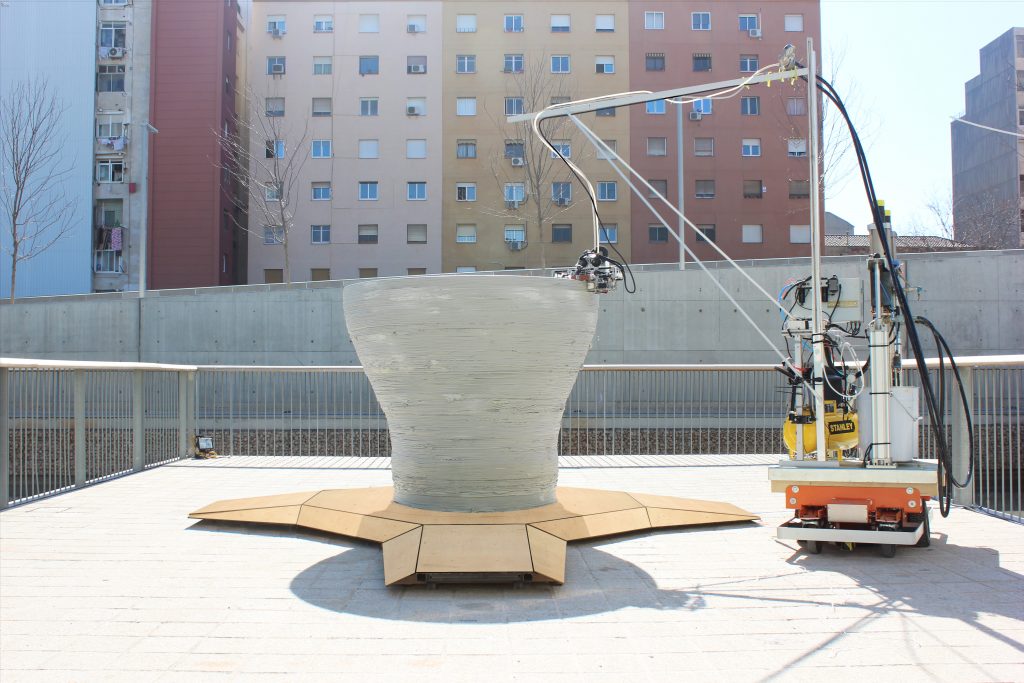
Will the building site be free of humans?
AD: I don’t believe so. Craftsmanship with an unpredictable material, problem-solving in an unexpected situation, decision-making involving social skills, design-thinking requiring innovation are still skills which can not be achieved with robots and AI. We imagine a future where humans are still fully in control of the process but with strong support from robots and AI.
Robots and humans will work together while Augmented Reality will permit to reduce the gap between the digital and the physical. BIM, 5G and cloud computing will allow for better synergy between on-site and off-site work while AI and digital simulation will assist the designer in their creative task. A construction sector between digital and physical systems, towards Human-Machine interaction and hybrid realities.
How to prepare for this future?
AD: Technology in the construction sector will evolve faster and faster, with a wider adoption in the next decade of computational design, BIM management, 3D scanning, robotic and digital fabrication. On the other hand, professionals in the sector will need to adapt quickly their workflow and learn these new skills.
In this context, IAAC proposes a new interdisciplinary Master in Robotics and Advanced Construction, in an effort to train a new generation of professionals capable of answering the challenges of a more sustainable and customized construction ecosystem. The master is based on a learn by doing methodology, combining state of the art theoretical and technological seminar with continuous practice and hands-on experiments in a series of workshops and pilot projects with researchers and industry partners.
We are excited about the future of construction and we hope to see the sector foster more collaboration in the development and exploration of these technologies. The synergy between university, research and industry all over the world are an important step to innovation, as it gathers multicultural and multidisciplinary approach to the problem. This is the path we choose to take at IAAC and it seems to work well. The future is promising!
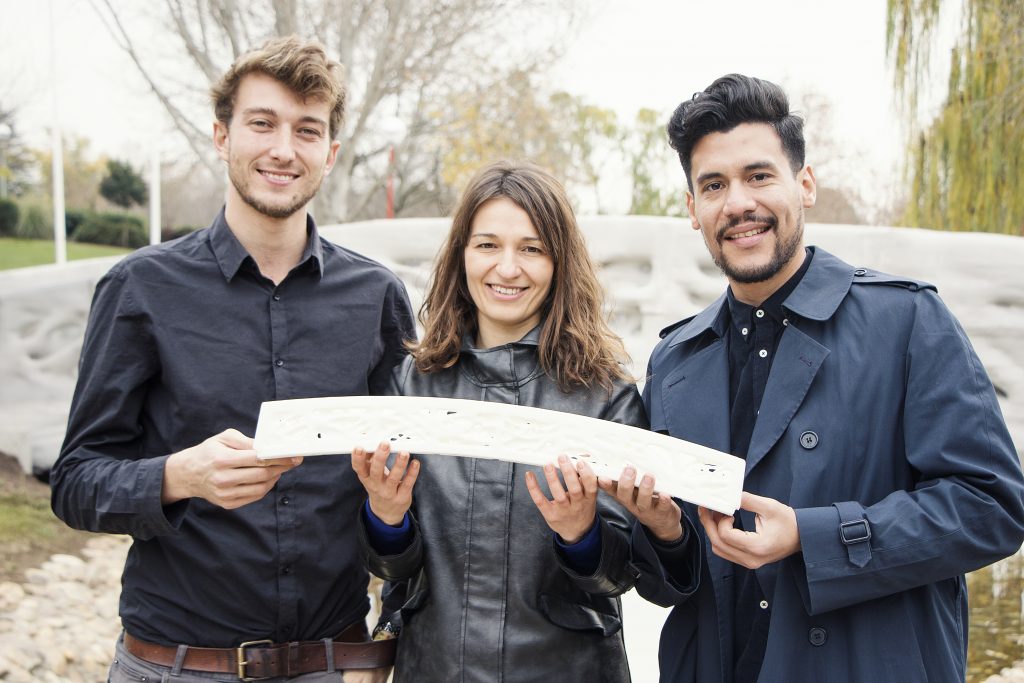
For more exclusive interviews and news subscribe to the 3D Printing Industry newsletter, follow us on Twitter, and like us on Facebook.
Search and post 3D Printing Jobs for new talent in design, engineering and more.
Featured image shows Alexandre Dubor speaking at IAAC in Spain. Photo via IAAC


